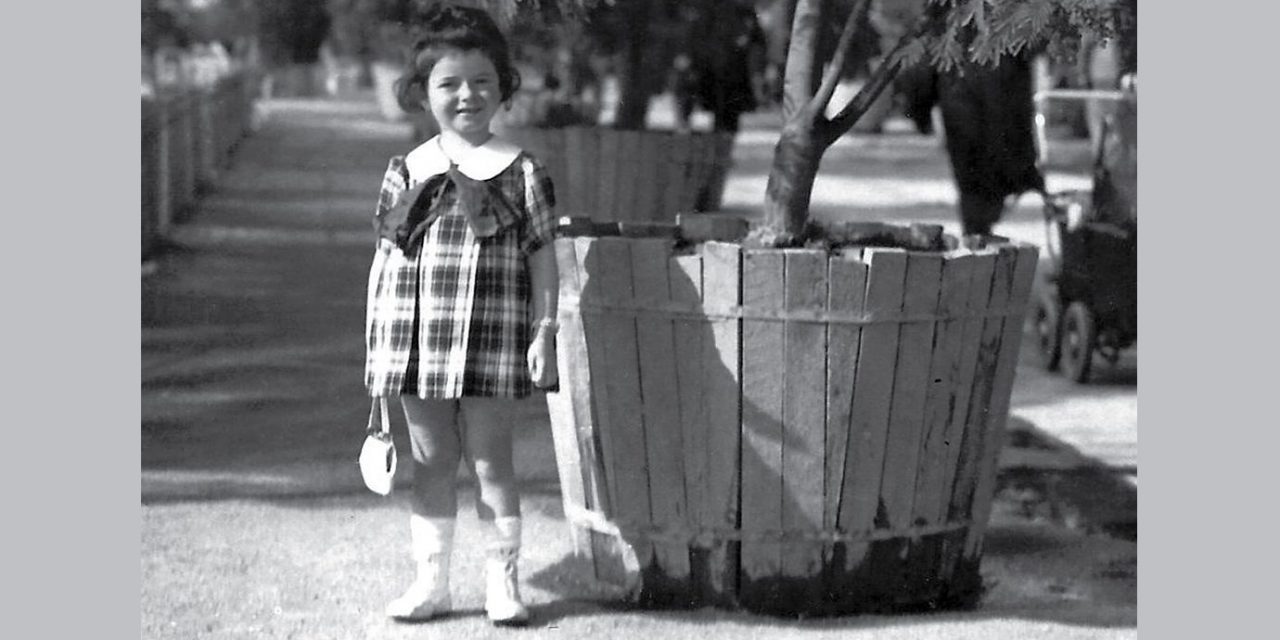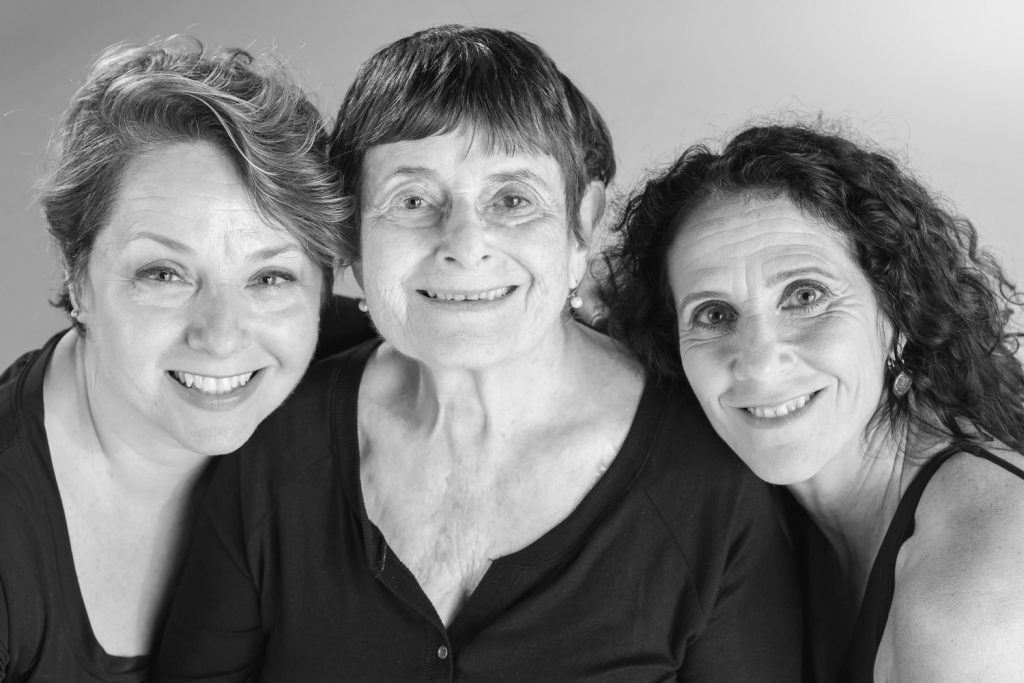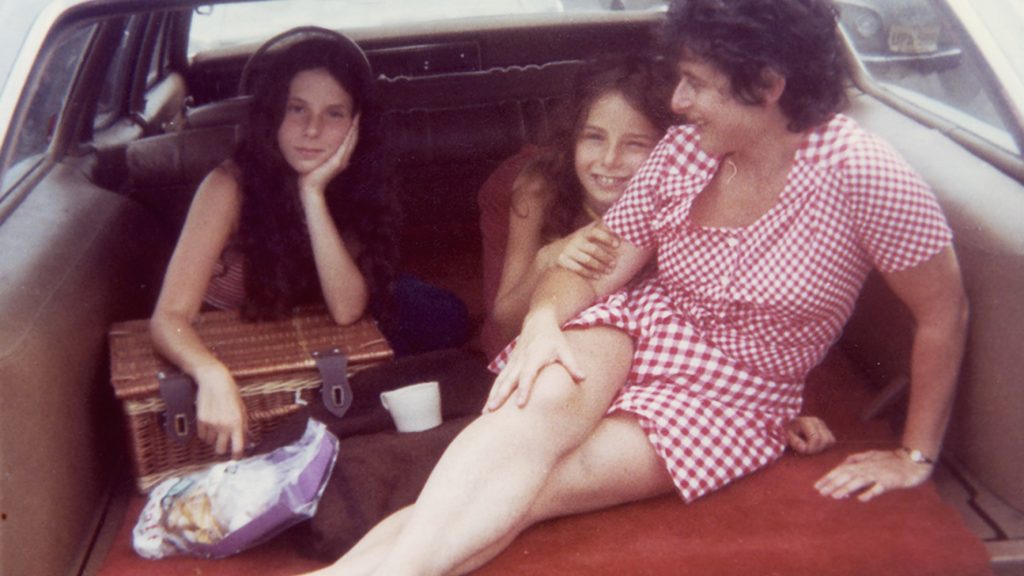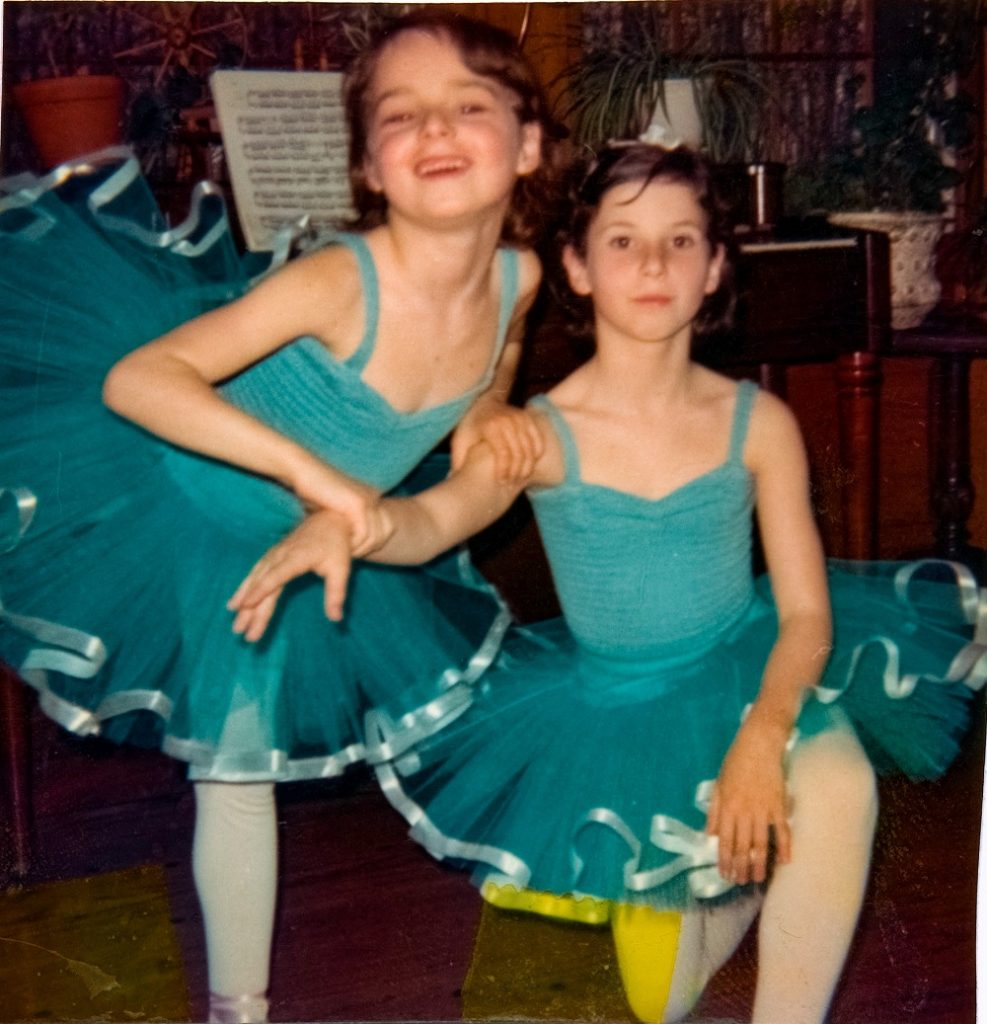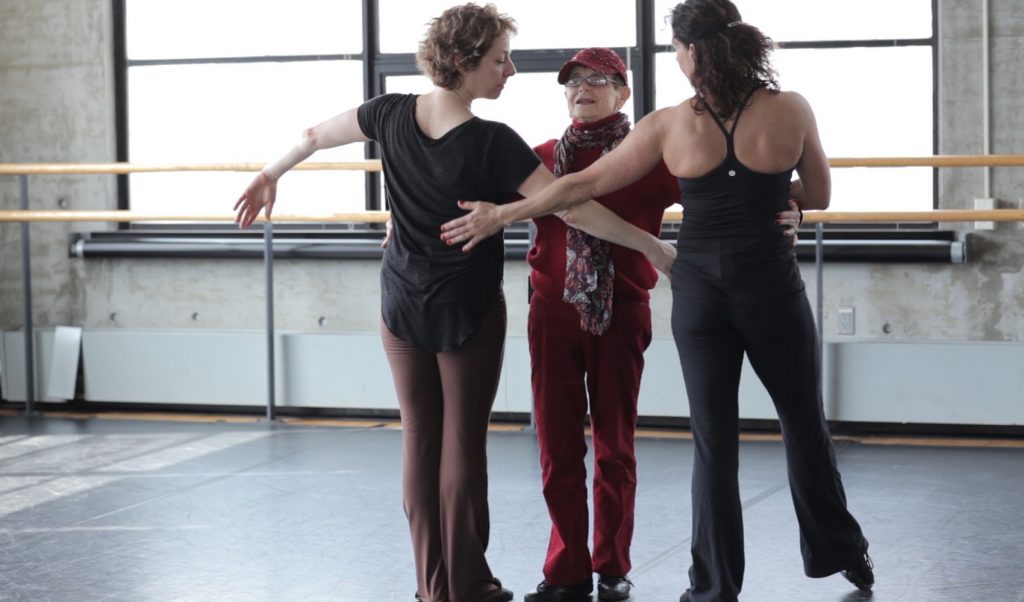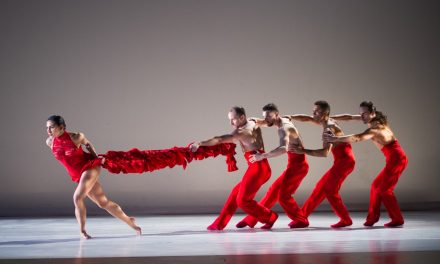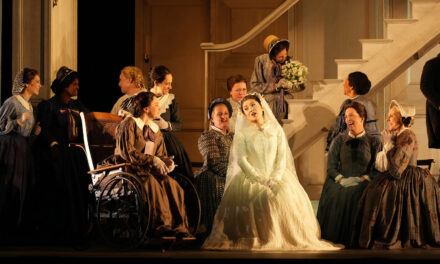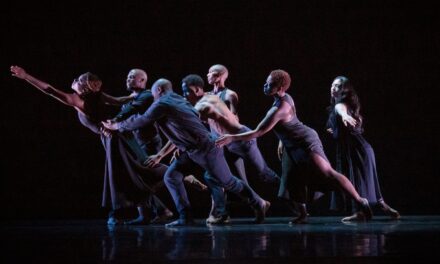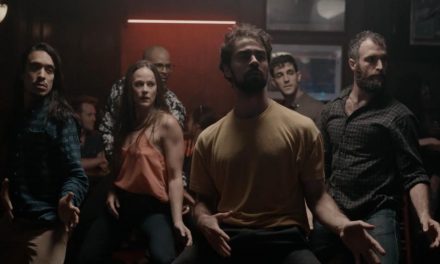On February 13, 2013 dancer and filmmaker Vera Wagman, her sister Deborah Wagman, also a dancer, and their mother, Fernande Wagman, entered a small studio in New Jersey for their first rehearsal on a new trio. What began as a simple project for the three of them to dance together for the first time, led to the making of an extraordinarily moving documentary titled Petit Rat which is set to air on KCET in Los Angeles on Wednesday, May 25, 2022 at 10pm. It also aired on PBS KVCR May 8 and on PBS + May 4.
Petit Rat is so very much more than a dance film or the complex relationship between a mother and her two daughters. It is a documentary that gives the viewer a glimpse into the dynamics between these three very talented women, how dance bound them together while simultaneously causing a rift. Petit Rat explores the intergenerational effects on the family of a French Jewish woman born in Paris a few years before World War II began. Fernande Wagman began dancing at age 8 with dreams of joining the ranks of young dancers called “Petit Rats” who are groomed for the Paris Opera Ballet. Fernande’s dreams were destroyed when her family had to leave Paris to avoid capture by the Nazis.
The documentary is filled with wonderful footage of Fernande’s early life in France along with historical scenes of the Nazi occupation of Paris. There is rare footage of former Russian prima ballerina Olga Preobrajenska (1871-1962), and Fernande’s post WWII trip to Yenne, France filmed by her husband where she hid with her family for several years that includes a past friend André Chagnon Whose parents, Marie and Placide, are recognized as The Righteous Among Nations at Yad Vashem. One cannot forget her childhood friend Michèle Thomas who sings a glorious, original song. And, poignantly, we experience the beautiful footage of Vera and Deborah Wagman performing professionally.
There is also an informative interview about Fernande’s childhood in France during the war that was filmed in 1990. At one time she had been the head of the French Department at the Academy of the Holy Angels in Demarest, New Jersey where she had presented her story about the Holocaust. It was on of Fernande’s students who videotaped her interview. “We had this jewel of an interview that was hiding on a VHS tape,” Vera said. “So when we were pulling all this archival material together, we were able to cut it in.”
I had the great opportunity to interview Vera Wagman to learn more about her amazing documentary. For the sake of clarity, I will refer to the three Wagman women by their first names.
The film begins with Vera choreographing movement for the trio that we see in Petit Rat. I was curious if the idea for the dance preceded the thought of creating a documentary. Vera said that the dance came first.
“What precipitated that was this vision that I had of my sister, myself and my mom in this position,” she said, “us carrying my mom at the end of her life across the stage – the role reversal. In that moment I realized that we have never danced together. We have so much history of dance, dance, dance and I thought let’s just get into a studio and create a piece.”
Both Deborah and Vera grew up in Allendale, New Jersey and took ballet classes with Irine Fokine, niece of Ballets Russes’ co-founder and choreographer Michel Fokine, in Ridgewood, NJ. Vera later attended Penn State during a time when she thought she was going to leave dancing but everything changed while walking in the town of State College where she passed a sign for Pennsylvania Dance Theatre. She discovered that it was run by dancer and choreographer LaRue Allen, whose focus was modern dance. Vera began taking classes with Allen and was soon invited to join the company. In addition to creating Pennsylvania Dance Theatre, Allen ran Trisha Brown’s company for a period of time in New York City and is currently the Executive Director of the Martha Graham Dance Company.
During her time with Allen’s company they worked with the very young Ohad Naharin, aka “Mr. Gaga” because he created the gaga technique. Other well-known dance artists who created works for Allen’s company were Kathryn Posin, Creach/Koester and Nina Weiner. “We got to work with these brilliant choreographers because that was her (Allen’s) vision,” Vera said. Vera also performed in New York with David Storey Dancers.
Deborah had been considered a child prodigy and at the young age of 16 was performing professionally. She was a member of American Ballet Theatre II (known then as Ballet Repertory Company which also launched Susan Jaffe’s career) and later a soloist with Ballet West in Salt Lake City, Utah. For reasons explained in the film, she stopped dancing ballet. After leaving the ballet world, she ventured into the world of Latin Ballroom dancing where she studied and performed with ballroom champion, Matt Hauer.
A couple of months after the three met for their first rehearsal, Vera and Deborah had almost completed choreographing the trio. What followed was a roundtable discussion, and the filming of the work in a studio at the Baryshnikov Arts Center, in April 2013. This inspired Vera to interview her entire family over the next four years, and in 2017 she and her creative team created their first crowd funding campaign which brought in enough revenue to do a rough cut of the film. They circulated the rough cut to a number of people for input and two years later there was enough money to complete the film.
When she began the project in 2013, Vera had a lot of questions to ask her mother and sister. She noted that there were a many intense moments as well as several humor filled interactions – and as is the case in filmmaking, some of them made it into the documentary, and some did not. Ultimately, Vera felt that the best story that she could tell was one of the bond between a mother and her daughters.
Vera had two incredible executive producers, Russell Rothberg (Paramount + “The Offer”, Apple TV Foundation) who is also her husband and producing partner, and filmmaker Roberta Grossman, who directed extraordinary films on Jewish culture and the Holocaust. Most recently, Andrew Carlberg, an Academy Award winning producer, joined the producing team. Rothberg and Grossman always saw Petit Rat as a three person film. While they were thinking that it was about a mother and her two daughters, Vera thought that it should include her father and brother, Marc David. “After Roberta became involved and we had all these discussions,” Vera said, “I was willing to say yes. Let’s focus everything on the mother-daughter story and that’s what we did.”
She described this process as being very organic, trimming the film down to what was the core of what was important. “At the heart of the matter is we understand what happened with our mom, Vera explained. “We understand the intergenerational trauma. We could speak about it in a way that we needed to speak about it. And then we could dance together after all is said and done.
As the completion of the film was nearing, Vera began working with the very gifted Los Angeles based Esther Shubinski, a freelance camera woman, director, writer and editor, and recipient of several prestigious awards. Shubinski is part Native American and part French, bilingual in French and English which aided in her grasping the cultural aspect of this project.
“She is a very intelligent and intuitive person and really understood the dynamics between us, Vera said. “Our mom, my sister – all of the relationship dynamics. What she really helped create was this piece that was very honest and unabashedly truthful about what happens in families.” Later during the interview Vera said about Shubinski, “She really dug into the material with this great eye. She was an outsider and so was able to look at the material with a very different perspective.”
During the documentary one learns about the tensions between the two siblings and how they often felt that they were living their mom’s life and dreams rather than their own.
“I was very young,” Vera said, “as we all are, very impressionable and very sensitive. My sister, who was a child prodigy, (and) as we watched her – oh, wow! She’s going to be a dancer. She’s got it. She’s got IT!!”
Vera described how at first she was extremely jealous of her sister Deborah, but that sibling rivalry was a one way street because Deborah was too busy concentrating on her dancing. “My mom has always been the most loving, the most supportive person,” Vera continued. “She understood what was going on, but at the same time, she saw this child of hers with this gift. So yes, she was very focused on Deborah becoming what she (Fernande) could not become.”
Living in Deborah’s shadow challenged Vera’s belief in herself as an artist. “I wanted to be seen as the person who I was.” She quickly added, however, that both her parents were extremely supportive of everything she ever did during her life. But family dynamics being what they are, Vera continued, “If we had filmed this film 20 to 25 years ago, it would have been a much more explosive experience. Through time, through maturity – you get a handle on what life is all about and who your parents are. And nobody’s perfect.”
Within the film Petit Rat, there are sections of a very moving solo choreographed and performed by Vera. I was curious to learn if that solo was choreographed to express how she was taking on her mother’s survival guilt and the pain of having to give up her dreams of becoming a ballerina.
“At that point I was leaving the business,” Vera said. “I was also very interested in film at the time and choreographing for film.” Before quitting, however, she decided to choreograph a new piece. “There was not a conscious connection to that, but you are so on point about this because that is exactly what it was!” She explained that it was not until years later while editing Petit Rat that she had what she described as “a stunning feeling to recognize that this is what I was doing. In that moment when we were filming that (solo), I was saying goodbye to dance. I was really going to leave the dance world.” She also felt that she was acknowledging her mother’s story and its ultimate effect on her.
I asked if the film ended as she had envisioned it.
“We actually had a very different ending, Vera related. “”In the rough cut, we actually ended it with our mom saying something to the effect of ‘Every family has its ups and downs’ which is a favorite quote of Fernande’s spoken by Katherine Hepburn as Eleanor of Aquitaine in the 1968 film The Lion In Winter.
Vera always knew that the film would end with the three Wagman women dancing but, as Vera so wonderfully put it, “We didn’t know that it was going to end with this sensation of ‘there’s my mom, 81 years old. She’s ok. And do you know what? We’re ok too!”
There is so much more that I could write about this beautiful film, but it is more important that you, the reader, watch it for yourself. Petit Rat is set to air on KCET in Los Angeles on Wednesday, May 25th at 10pm. It is also accessible on KLCS, Empire PBS KVCR, and on PBS +.
Credits for Petit Rat:
Cast: Fernande Wagman, Deborah Wagman, Vera Wagman; Director/Writer/Choreographer: Vera Wagman; Co-Director/Director of Photography: Scott Whitham;
Producers: Vera Wagman, Russell Rothberg; Executive Producers: Russell Rothberg, Roberta Grossman, and Andrew Carlberg; Editor: Esther Shubinski; Composer: Joy Ngiaw
Petit Rat has screened at various film festivals around the world to critical acclaim, including the Miami Jewish Film Festival (where it received an Audience Award), Kitzbuehel Film Festival, Woods Home Film Festival, Cinequest Film Festival, Vail Film Festival, FIDBA – International Documentary Film Festival, Buenos Aires, Near Nazareth, and FICS, the Festival del Cinema di Salerno.
####
To read more about this amazing cast and creative team, please click HERE.
To learn more about Petit Rat, please visit their WEBSITE:
One can also follow the film on Facebook and on Instagram.
Written by Jeff Slayton for LA Dance Chronicle.
Featured image: Very young Fernande – Photo courtesy of the Wagman family.
Please follow LA Dance Chronicle on Facebook, and on Instagram and on LinkedIn and on Twitter.
Please consider donating to LA Dance Chronicle HERE.

